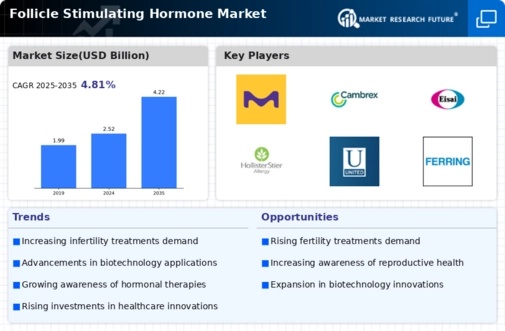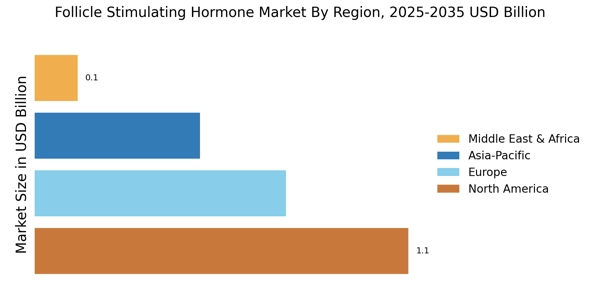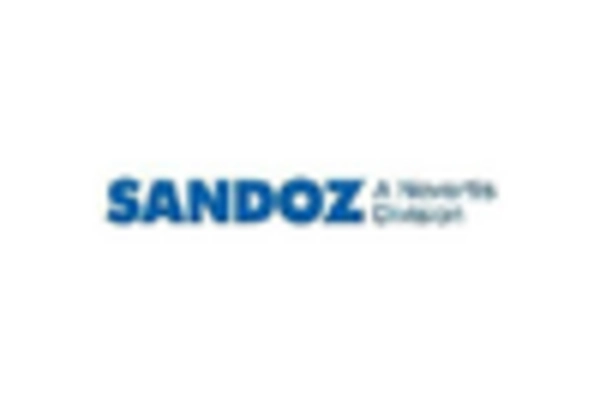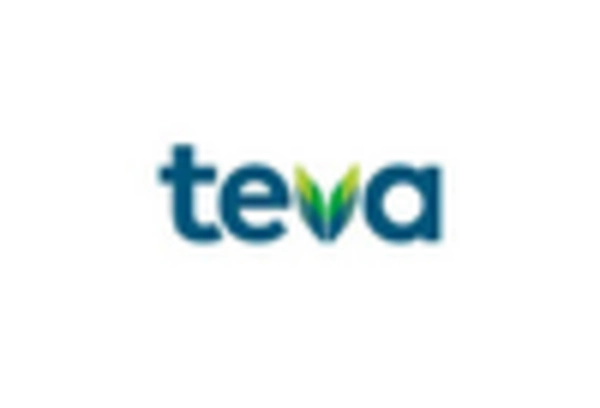Rising Incidence of Infertility
The increasing incidence of infertility is a critical driver for the Follicle Stimulating Hormone Market. Factors such as delayed childbearing, lifestyle changes, and environmental influences have contributed to a rise in infertility rates across various demographics. According to recent statistics, approximately 15% of couples experience infertility, prompting a greater need for effective treatment options. As a result, there is a heightened demand for fertility medications, including those that contain follicle stimulating hormone. This trend is expected to continue, with projections indicating that the market for FSH therapies could reach several billion dollars in the coming years. The growing recognition of infertility as a significant health issue is likely to further propel the Follicle Stimulating Hormone Market.
Growing Investment in Fertility Clinics
The growing investment in fertility clinics is a significant driver for the Follicle Stimulating Hormone Market. As the demand for fertility treatments escalates, there has been a marked increase in the establishment and expansion of fertility clinics worldwide. These clinics are often equipped with advanced technologies and offer a range of services, including FSH-based therapies. The influx of investment not only enhances the quality of care provided but also increases the availability of treatment options for patients. Recent data indicates that the fertility clinic market is projected to grow at a compound annual growth rate of over 8% in the next few years. This trend suggests a promising outlook for the Follicle Stimulating Hormone Market as more individuals seek assistance in their reproductive journeys.
Increasing Awareness of Reproductive Health
The rising awareness surrounding reproductive health is a pivotal driver for the Follicle Stimulating Hormone Market. As individuals become more informed about fertility issues, there is a corresponding increase in the demand for treatments that utilize follicle stimulating hormone. This awareness is often fueled by educational campaigns and social media, which highlight the importance of reproductive health. Consequently, healthcare providers are witnessing a surge in consultations related to fertility, leading to a higher uptake of FSH-based therapies. In recent years, the market has seen a notable increase, with estimates suggesting a growth rate of approximately 6% annually. This trend indicates a robust potential for the Follicle Stimulating Hormone Market as more individuals seek assistance in managing their reproductive health.
Supportive Government Policies and Initiatives
Supportive government policies and initiatives play a vital role in shaping the Follicle Stimulating Hormone Market. Many governments are increasingly recognizing the importance of reproductive health and are implementing policies that promote access to fertility treatments. This includes funding for research, subsidies for fertility medications, and the establishment of guidelines for assisted reproductive technologies. Such initiatives not only enhance the availability of FSH therapies but also encourage healthcare providers to adopt these treatments. As a result, the market is likely to experience growth driven by increased accessibility and affordability of follicle stimulating hormone products. Furthermore, collaborations between public health organizations and private sectors are expected to foster innovation within the Follicle Stimulating Hormone Market.
Technological Advancements in Drug Development
Technological advancements in drug development are significantly influencing the Follicle Stimulating Hormone Market. Innovations in biotechnology and pharmaceutical research have led to the creation of more effective and targeted FSH formulations. These advancements not only enhance the efficacy of treatments but also improve patient compliance due to reduced side effects. For instance, the introduction of long-acting FSH products has transformed treatment protocols, allowing for less frequent dosing. This shift is likely to attract more patients to seek FSH therapies, thereby expanding the market. Furthermore, the integration of digital health technologies, such as telemedicine and mobile health applications, is facilitating better patient management and monitoring, which could further bolster the Follicle Stimulating Hormone Market.


















Leave a Comment